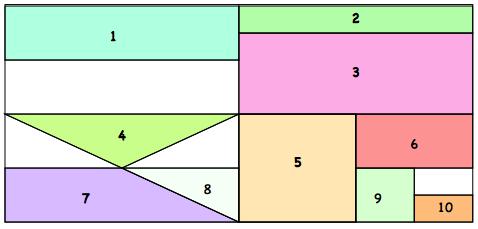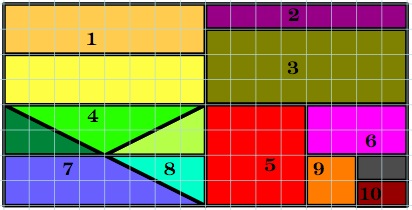Or search by topic
Number and algebra
Geometry and measure
Probability and statistics
Working mathematically
Advanced mathematics
For younger learners
Fractions Rectangle



- Problem
- Student Solutions
- Teachers' Resources
Rectangle Tangle

The large rectangle above is divided into a series of smaller quadrilaterals and triangles. Each of the shapes is a fractional part of the large rectangle.
Can you untangle what fractional part is represented by each of the ten numbered shapes?
Why do this problem?
Possible approach

Key questions
Possible extension
Possible support
You may also like
Tweedle Dum and Tweedle Dee
Two brothers were left some money, amounting to an exact number of pounds, to divide between them. DEE undertook the division. "But your heap is larger than mine!" cried DUM...
Sum Equals Product
The sum of the numbers 4 and 1 [1/3] is the same as the product of 4 and 1 [1/3]; that is to say 4 + 1 [1/3] = 4 � 1 [1/3]. What other numbers have the sum equal to the product and can this be so for any whole numbers?
Special Sums and Products
Find some examples of pairs of numbers such that their sum is a factor of their product. eg. 4 + 12 = 16 and 4 × 12 = 48 and 16 is a factor of 48.

